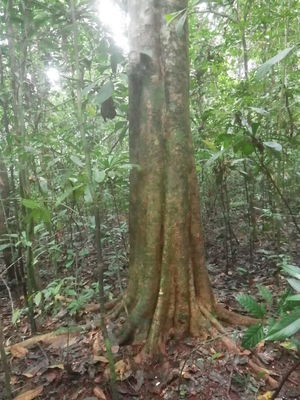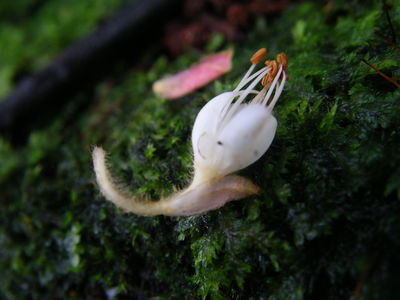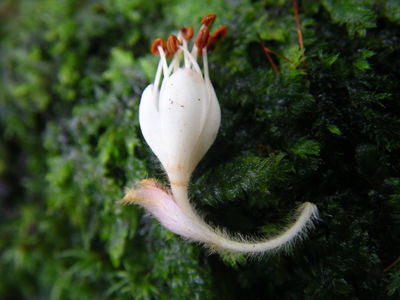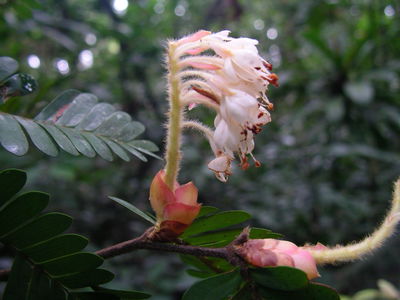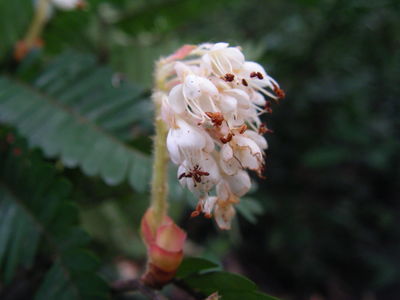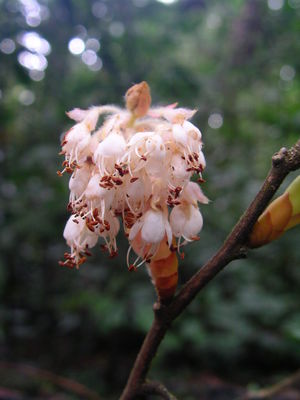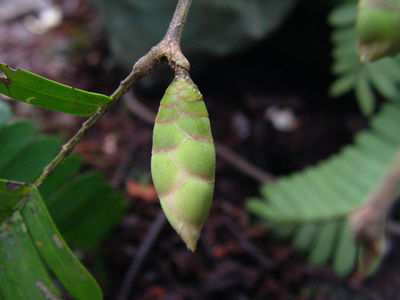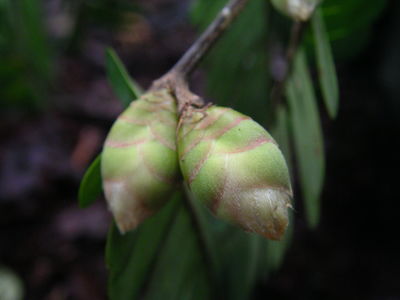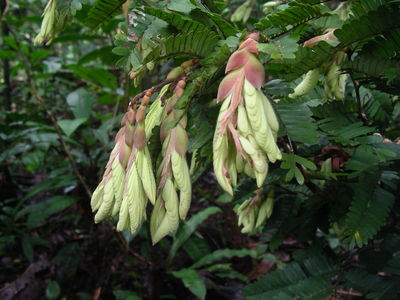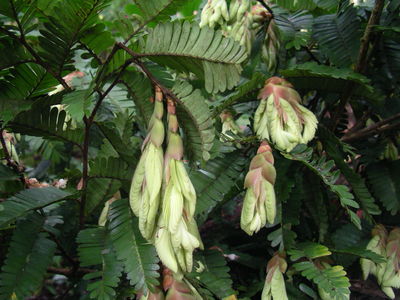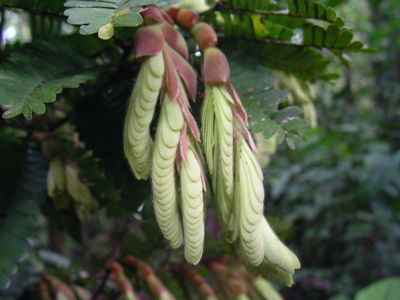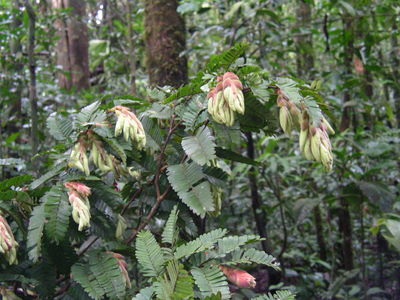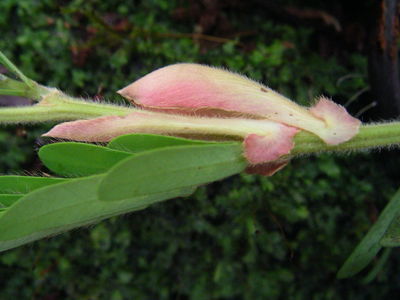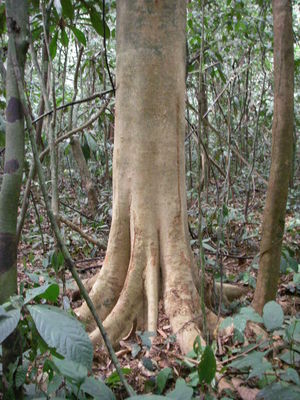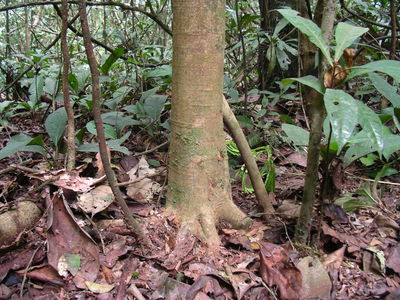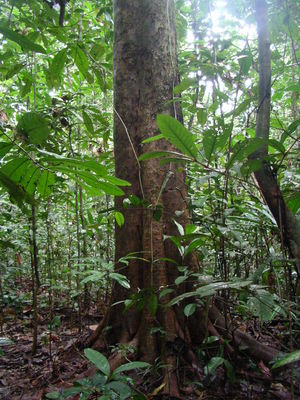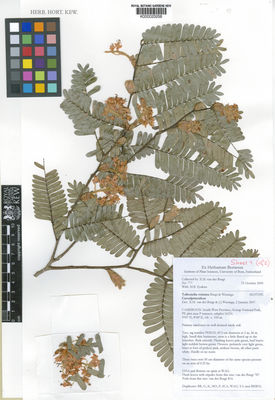Geography and distribution
This species has been found in Cameroon (Africa), where it occurs in the Southwest Province in two localities: Korup National Park and Besingi village forest.
Description
Talbotiella velutina is a tree of up to 35.3 m high, and up to 76 cm stem diameter.
The trees always grow in small groups, hence if one tree is found there are always a few other trees within a distance of about 50 m.
Due to the dimensions of this tree the flowers and fruits can only be collected by climbing with alpine climbing equipment, which can be a hazardous activity.
Threats and conservation
A total of 39 trees of this species have been found in remote parts of the Korup National Park and the Besingi village forest. Tourists seldom go there, but researchers sometimes visit the area.
Korup National Park is often visited by poachers who are slowly reducing the animal population of the park. This has serious consequences for the ecology of the vegetation in the park, and may affect the Talbotiella velutina trees.
The presence of Talbotiella velutina and other rare plant and animal species in Korup National Park shows how important this park is for the conservation of biodiversity.Four trees were found in the Besingi village forest. The chief of the village, Bila Michael Njibili, is aware of the presence of this critically endangered tree in his forest.
However, there is a great risk that the part of the forest containing the four trees will be used for slash and burn agriculture in the near future.
Villagers in Cameroon are generally interested in the presence of rare plant species in their forests, but have a primary need to raise their families. Often farming and hunting are the only sources of income.
The seeds of Talbotiella velutina are not bankable in seed banks as they contain too much water to be stored for more than a few days.
Preserved samples of Talbotiella velutina are stored in 11 herbaria: two in Cameroon, seven in Europe and two in the USA (B, BR, G, K, MA, MO, P, SCA, WAG, US, YA).





